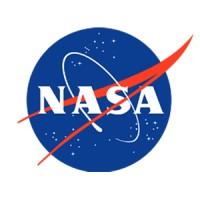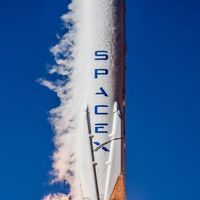NASA's Cautious Steps: Starliner Returns Uncrewed While Starpath Eyes Lunar Water
August 28, 2024, 4:04 pm

Location: United States, Maryland, Greenbelt
Employees: 10001+
Founded date: 1958
Total raised: $25.7B

Location: United States, District of Columbia, Washington
Employees: 5001-10000
Founded date: 2002
Total raised: $7.53B
NASA is playing it safe. The agency has decided to bring Boeing's Starliner spacecraft back to Earth without its crew. Astronauts Butch Wilmore and Suni Williams will remain aboard the International Space Station (ISS) for now. This decision reflects a commitment to safety, a principle that guides every move in the unpredictable realm of spaceflight.
Space is a high-stakes game. Every mission is a dance with danger. The Starliner, which had already flown to the ISS, faced challenges. Helium leaks and thruster issues raised red flags. NASA and Boeing conducted extensive reviews and tests. They concluded that the risks were too high for a crewed return. So, the astronauts will wait for a safer ride home aboard a SpaceX Dragon spacecraft.
This uncrewed return is not just a precaution. It’s a chance to gather more data. NASA aims to refine Starliner for future missions. The spacecraft is designed to operate autonomously. It has already completed two uncrewed flights. This next step will provide critical insights into its performance.
The decision to keep Wilmore and Williams on the ISS until February 2025 is strategic. They will continue their work, contributing to ongoing research and system testing. Meanwhile, Starliner will make a controlled re-entry and landing in early September. NASA is determined to ensure that every mission meets its safety and performance standards.
In a parallel universe of space exploration, Starpath Robotics is making waves. This startup is focused on extracting water from the Moon. Water is the lifeblood of space missions. It’s essential for sustaining human presence beyond Earth. Starpath believes lunar water ice can fuel a new era of exploration.
The company recently secured $12 million in funding from NASA. This investment accelerates their plans to harvest lunar resources. Starpath envisions fleets of rovers digging up lunar soil. They aim to extract water, split it into hydrogen and oxygen, and produce liquid oxygen (LOX). This LOX will be crucial for rocket fuel.
Starpath’s vision is ambitious. They plan to demonstrate their technology in a simulated lunar environment. By the end of the year, they hope to showcase their system’s capabilities. The goal is to produce around 100 tons of LOX annually. This is no small feat. No one has ever harvested water on the Moon, let alone processed it.
The startup is refining its rover technology. Initially, they estimated needing 50 rovers to achieve their goals. Now, they believe they can do it with fewer machines. This efficiency could be a game-changer. It reduces costs and increases feasibility.
NASA’s support has been instrumental. The agency provided an $800,000 grant to help develop the rover. This partnership highlights the growing collaboration between government and private industry in space exploration. Starpath is not just looking at the Moon. They have their sights set on Mars, too. The potential for a multi-planetary existence is within reach.
As Starpath prepares for its lunar mission, the landscape of space exploration is evolving. NASA’s Commercial Crew Program continues to push boundaries. The agency’s collaboration with Boeing and SpaceX is reshaping human spaceflight. The Crew-9 mission is on the horizon, set to launch no earlier than September 24. This mission will carry astronauts to the ISS, furthering scientific research and exploration.
The ISS has been a hub of innovation for over two decades. It serves as a testing ground for technologies that will enable long-duration spaceflight. As commercial companies step up, NASA’s Artemis program is gearing up for lunar exploration. The Moon is a stepping stone to Mars. The future of human presence in space is bright.
In this new era, safety and innovation go hand in hand. NASA’s cautious approach with Starliner reflects a deep understanding of the risks involved. Every decision is made with the crew’s safety as the top priority. Meanwhile, Starpath’s bold ambitions showcase the potential of private industry to drive exploration forward.
The Moon and Mars are not just distant dreams. They are becoming tangible goals. With each mission, we learn more about the challenges of living and working in space. The journey is fraught with obstacles, but the rewards are immense. Humanity’s reach is expanding, and the stars are within our grasp.
As we look to the future, the collaboration between NASA and private companies will be crucial. Together, they will pave the way for a new era of exploration. The Moon will be a launchpad for Mars and beyond. The possibilities are endless. The universe is vast, and we are just beginning to explore its depths.
In conclusion, NASA’s decision to return Starliner uncrewed is a testament to its commitment to safety. Meanwhile, Starpath Robotics is pushing the envelope in lunar resource extraction. The future of space exploration is a blend of caution and ambition. As we venture into the cosmos, every step will be a leap toward a multi-planetary existence. The stars are calling, and we are ready to answer.
Space is a high-stakes game. Every mission is a dance with danger. The Starliner, which had already flown to the ISS, faced challenges. Helium leaks and thruster issues raised red flags. NASA and Boeing conducted extensive reviews and tests. They concluded that the risks were too high for a crewed return. So, the astronauts will wait for a safer ride home aboard a SpaceX Dragon spacecraft.
This uncrewed return is not just a precaution. It’s a chance to gather more data. NASA aims to refine Starliner for future missions. The spacecraft is designed to operate autonomously. It has already completed two uncrewed flights. This next step will provide critical insights into its performance.
The decision to keep Wilmore and Williams on the ISS until February 2025 is strategic. They will continue their work, contributing to ongoing research and system testing. Meanwhile, Starliner will make a controlled re-entry and landing in early September. NASA is determined to ensure that every mission meets its safety and performance standards.
In a parallel universe of space exploration, Starpath Robotics is making waves. This startup is focused on extracting water from the Moon. Water is the lifeblood of space missions. It’s essential for sustaining human presence beyond Earth. Starpath believes lunar water ice can fuel a new era of exploration.
The company recently secured $12 million in funding from NASA. This investment accelerates their plans to harvest lunar resources. Starpath envisions fleets of rovers digging up lunar soil. They aim to extract water, split it into hydrogen and oxygen, and produce liquid oxygen (LOX). This LOX will be crucial for rocket fuel.
Starpath’s vision is ambitious. They plan to demonstrate their technology in a simulated lunar environment. By the end of the year, they hope to showcase their system’s capabilities. The goal is to produce around 100 tons of LOX annually. This is no small feat. No one has ever harvested water on the Moon, let alone processed it.
The startup is refining its rover technology. Initially, they estimated needing 50 rovers to achieve their goals. Now, they believe they can do it with fewer machines. This efficiency could be a game-changer. It reduces costs and increases feasibility.
NASA’s support has been instrumental. The agency provided an $800,000 grant to help develop the rover. This partnership highlights the growing collaboration between government and private industry in space exploration. Starpath is not just looking at the Moon. They have their sights set on Mars, too. The potential for a multi-planetary existence is within reach.
As Starpath prepares for its lunar mission, the landscape of space exploration is evolving. NASA’s Commercial Crew Program continues to push boundaries. The agency’s collaboration with Boeing and SpaceX is reshaping human spaceflight. The Crew-9 mission is on the horizon, set to launch no earlier than September 24. This mission will carry astronauts to the ISS, furthering scientific research and exploration.
The ISS has been a hub of innovation for over two decades. It serves as a testing ground for technologies that will enable long-duration spaceflight. As commercial companies step up, NASA’s Artemis program is gearing up for lunar exploration. The Moon is a stepping stone to Mars. The future of human presence in space is bright.
In this new era, safety and innovation go hand in hand. NASA’s cautious approach with Starliner reflects a deep understanding of the risks involved. Every decision is made with the crew’s safety as the top priority. Meanwhile, Starpath’s bold ambitions showcase the potential of private industry to drive exploration forward.
The Moon and Mars are not just distant dreams. They are becoming tangible goals. With each mission, we learn more about the challenges of living and working in space. The journey is fraught with obstacles, but the rewards are immense. Humanity’s reach is expanding, and the stars are within our grasp.
As we look to the future, the collaboration between NASA and private companies will be crucial. Together, they will pave the way for a new era of exploration. The Moon will be a launchpad for Mars and beyond. The possibilities are endless. The universe is vast, and we are just beginning to explore its depths.
In conclusion, NASA’s decision to return Starliner uncrewed is a testament to its commitment to safety. Meanwhile, Starpath Robotics is pushing the envelope in lunar resource extraction. The future of space exploration is a blend of caution and ambition. As we venture into the cosmos, every step will be a leap toward a multi-planetary existence. The stars are calling, and we are ready to answer.